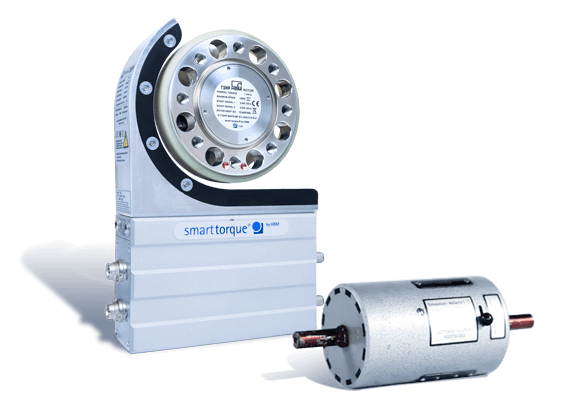The Importance of Torque Measurements
Torque is a vital mechanical measurement for the machine building industry, but this measurement is also relevant in some other applications. Precise torque measurement is required by many industries, one example is the users and manufacturers of test benches, for various tests.
There is also a requirement for modern engines to have improved mechanical performance by increasing their rotating speed, and improved accuracy in various areas including efficiency measurements.
There is now continuous development in torque measurements, which considers the constant advances in the various application fields. The original design principle of the torque shafts are still employed for specific applications, however the full range of transducers from HBM now includes shaft and flange design torque measuerement.
There have been many advances in the design of torque transducers, including contactless torque transducers which involve the transfer of power from the stator to the rotor and the transmission of measurement signals.
The Significance of Torque as a Measured Quantity
Torque is a significant measurement in a range of applications, including gas turbines with e.g. 50 kN·m of nominal torque at 8000 min–1 and a mechanical output of over 40 MW, or Formula 1 test benches with nominal torque in the range up to 2 kN·m with speeds of > 20,000 min–1. Torque is an important measurement almost everything, including the screw caps on medicine bottles, and for many products the permitted tolerances are mandatory.
The automotive industry is faced with consumer demand for vehicles that offer lower fuel consumption, greater operating safety, longer-lasting reliability, and higher levels of comfort. This demand and even stricter legal requirements for lower emissions has resulted in a need for metrological and test techniques.
The data required now needs to be acquired precisely and reproducibly, and torque is one of the critical measurements, especially for the development of combustion engines and transmission. This also affecting the increasing testing in e-mobility. In combination with rotation speed, this enables mechanical power to be calculated.
Previously for engine test benches, measurement was fulfilled by using braking devices with a measurement capability, but now it is more common to perform in-line torque measurement using rotating torque transducers.
The use of rotating torque transducers is more common as the processes are dynamic, and the interplay between mechanisms is an increasingly important consideration for optimization.
Torque Transducers from HBM
HBM is the worldwide market leader for torque transducers. We have over 50 years experience in the electrical measurement of mechanical quantities. HBM's service teams still receive first generation transducers for testing, overhaul, or calibration.
HBM was accredited as a DKD calibration laboratory for the measured quantity force in 1977, making HBM the first calibration laboratory accepted into the DKD (German Calibration Service). Accreditation for measured quantity torque was awarded on July 13th, 1990, which made HBM the only calibration authority for torque in Germany for many years.
HBM now offers a very broad range of calibration steps in the DKD; from 2 N·m up to 400 kN·m. Our equipment has an extremely high level of accuracy due to a mass-lever system where the force is directly generated by the action of a mass in the Earth’s gravitational field. In addition calibration machines with the use of reference transducer are part of our laboratory. In addition, 1986 HBM was the first company in Germany to be accredited according to ISO 9001, and this was followed in 1996 by the accreditation of ISO 14001. For any more information, please contact us.
